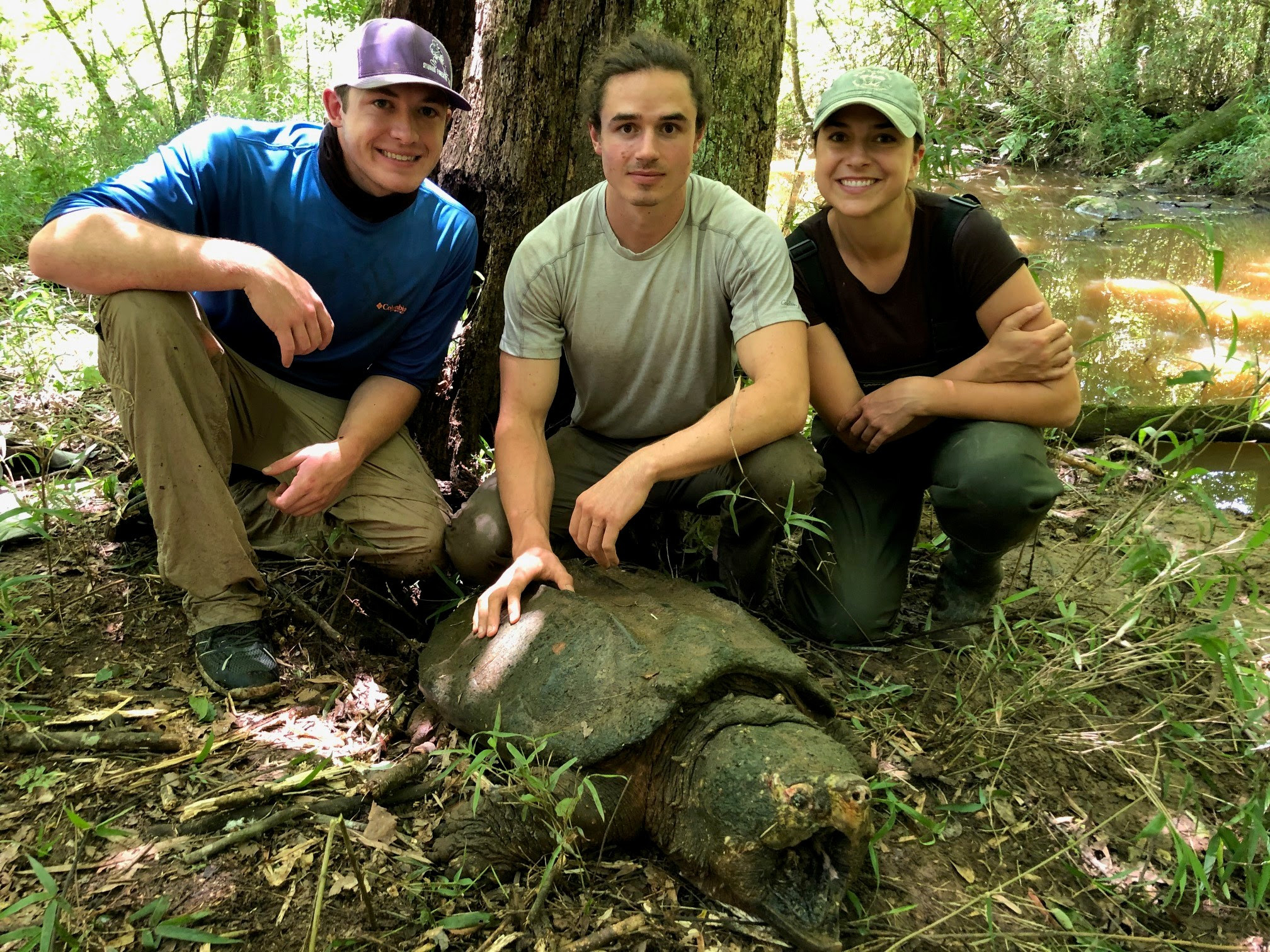Government Surveying Alligator Snappers
Mobile Cabins Built For Hunting, Fishing Outdoors Lovers
May 25, 2023
TPWD Commission Approves Purchase of Fairfield Lake State Park
May 30, 2023Alligator snapping turtles (Macrochelys temminckii) are large, freshwater turtles that live in large rivers from Texas to Florida. They are listed as threatened in several states, and more information about their populations is needed.
Sampling the animals can be a challenge. Alligator snapping turtles are the largest freshwater turtles in North America and can grow to be over 200 pounds. They spend most of their time completely submerged in deep murky water. For this reason, baited hoop traps have been the only reliable sampling method. This traditional type of sampling requires a lot of time and effort.
“Traditional sampling methods put both the researcher and the turtle at risk of injury,” says Forest Service researcher Dan Saenz. “These turtles have jaws like giant shears. Handling them requires a bit of courage and lot of skill to keep everyone safe.”
Saenz and Forest Service researcher Chris Schalk recently contributed to a study on the turtles, which was led by David Rosenbaum, a master’s student at Stephen F. Austin State University in Texas.
 The study suggests that alligator snapping turtles are very abundant in Texas, where they are protected by law. For the study, the researchers used traditional hoop trapping to survey 51 rivers and lakes across the state.
The study suggests that alligator snapping turtles are very abundant in Texas, where they are protected by law. For the study, the researchers used traditional hoop trapping to survey 51 rivers and lakes across the state.
While at the sampling sites, the researchers collected small amounts of water and analyzed them for environmental DNA – genetic material that the turtles shed as they swim and search for food. Known as eDNA, this genetic material can indicate the presence of a species without having to touch or see the animal.
The eDNA results were promising. Whenever alligator snapping turtle eDNA was detected in a water sample, it was positive that reptiles were in that stretch of river or lake. However, there were many cases where turtles were present but not detected with the eDNA technique.
Over the next two years, the team will be refining the eDNA methods and searching for a solution to the issues with false negatives. The project is funded by the Texas Parks and Wildlife Department, the Texas Comptroller of Public Accounts.
“We are very hopeful that this promising method can be refined and used in the future to survey alligator snapping turtles,” says Schalk.
Alligator snapping turtles are massive, weighing up to 200 pounds, unlike the common snapping turtle that only grows to 40 pounds. Researchers are developing ways to monitor the threatened turtles with eDNA, as it is more efficient and safer for both the researchers and turtles. USDA Forest Service photo by Christopher Schalk

An alligator snapping turtle the researchers found in Texas. Unless they’re harassed, snapping turtles are not aggressive and will not snap at people. USDA Forest Service photo by Christopher Schalk
![]()




